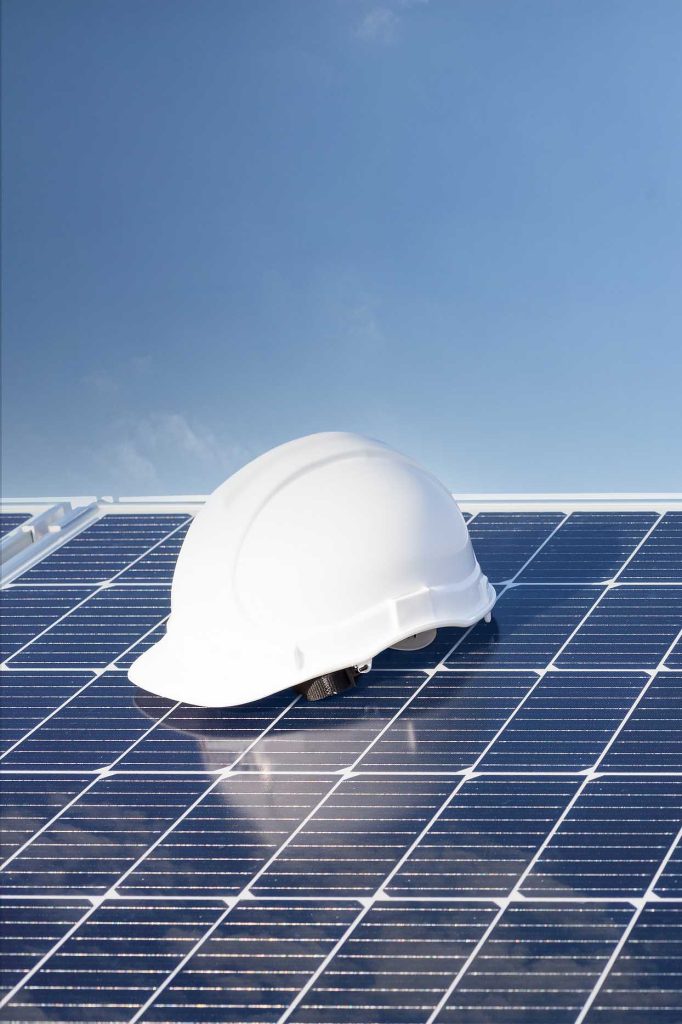
Solar energy is increasingly being recognized as a sustainable alternative to conventional power sources. Massive solar farms and small-scale solar installations are springing up around the world. But, as with any infrastructure or energy project, safety should never be overlooked. Whether you’re an employee, a contractor, or just a curious visitor, there are potential hazards at solar sites. This article will highlight some of these hazards, which can be present when visiting or walking around a solar installation.
Electrical Hazards:
Electrocution: Solar panels generate electricity when exposed to sunlight. Coming into direct contact with the back of solar panels, connectors, or damaged cables can lead to electric shock.
Arc flashes: If there’s a sudden discharge of electricity in the equipment, it can cause an arc flash, which can result in severe burns and injuries.
Tripping and Falling:
Cables and equipment: There might be loose cables or equipment on the ground which can be a tripping hazard.
Uneven surfaces: Solar installations, especially in large solar farms, may be spread across uneven terrain.
Exposure to Harmful Materials:
Chemicals: Certain solar panel types or equipment may contain hazardous chemicals. Breaking such panels or mishandling equipment can lead to exposure.
Heat and Solar Radiation:
Heat exhaustion: Solar sites, by their nature, are exposed to direct sunlight. This can lead to heat-related illnesses if proper precautions aren’t taken.
Solar reflection: Some solar panels can reflect sunlight, which can be blinding and hazardous if directly looked at.
Mechanical Hazards:
Moving parts: Some solar installations, like solar trackers, have moving parts that can pose a risk if one gets too close.
Heavy equipment: The installation and maintenance of solar panels often involve the use of heavy machinery, which can pose risks if not operated or approached with care.
Wildlife and Plants:
Wild animals: Solar farms, especially in remote locations, can sometimes become habitats for wild animals. There’s a risk of encountering snakes, insects, or larger animals that might perceive humans as threats.
Harmful plants: Poisonous plants or those with thorns might be present around the solar site, posing risks of skin irritations or injuries.
Weather-Related Risks:
Storms and lightning: Metal structures in open fields, like solar installations, can be struck by lightning.
Windy conditions: Strong winds can make walking around the solar site hazardous due to flying debris or the risk of panels or equipment getting dislodged.
High Voltage Equipment:
Apart from the panels themselves, solar installations consist of inverters, transformers, and other high voltage equipment. Getting too close or tampering with them can lead to severe injuries.
Safety Precautions:
If visiting a solar site:
- Always be accompanied by a knowledgeable site worker who can guide and inform about potential dangers.
- Wear appropriate PPE (Personal Protective Equipment) such as hard hats, safety shoes, and protective eyewear.
- Stay on marked paths and avoid wandering.
- Avoid touching any equipment or panels.
- Keep a safe distance from heavy machinery or any ongoing construction or maintenance activities.
- Stay hydrated and take necessary precautions against the sun.
In conclusion, while solar sites are instrumental in our shift towards cleaner energy, they are not free from risks. Awareness and adherence to safety guidelines can ensure that visits to these sites remain educational and safe.
